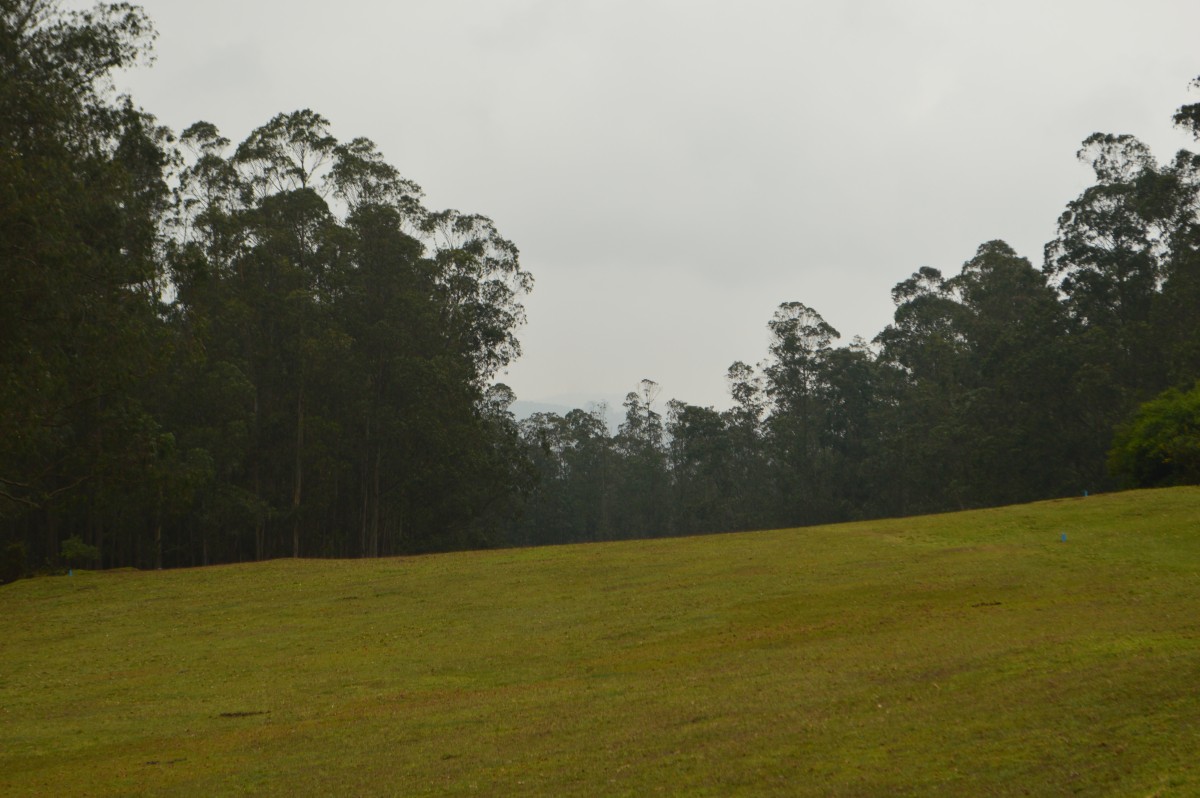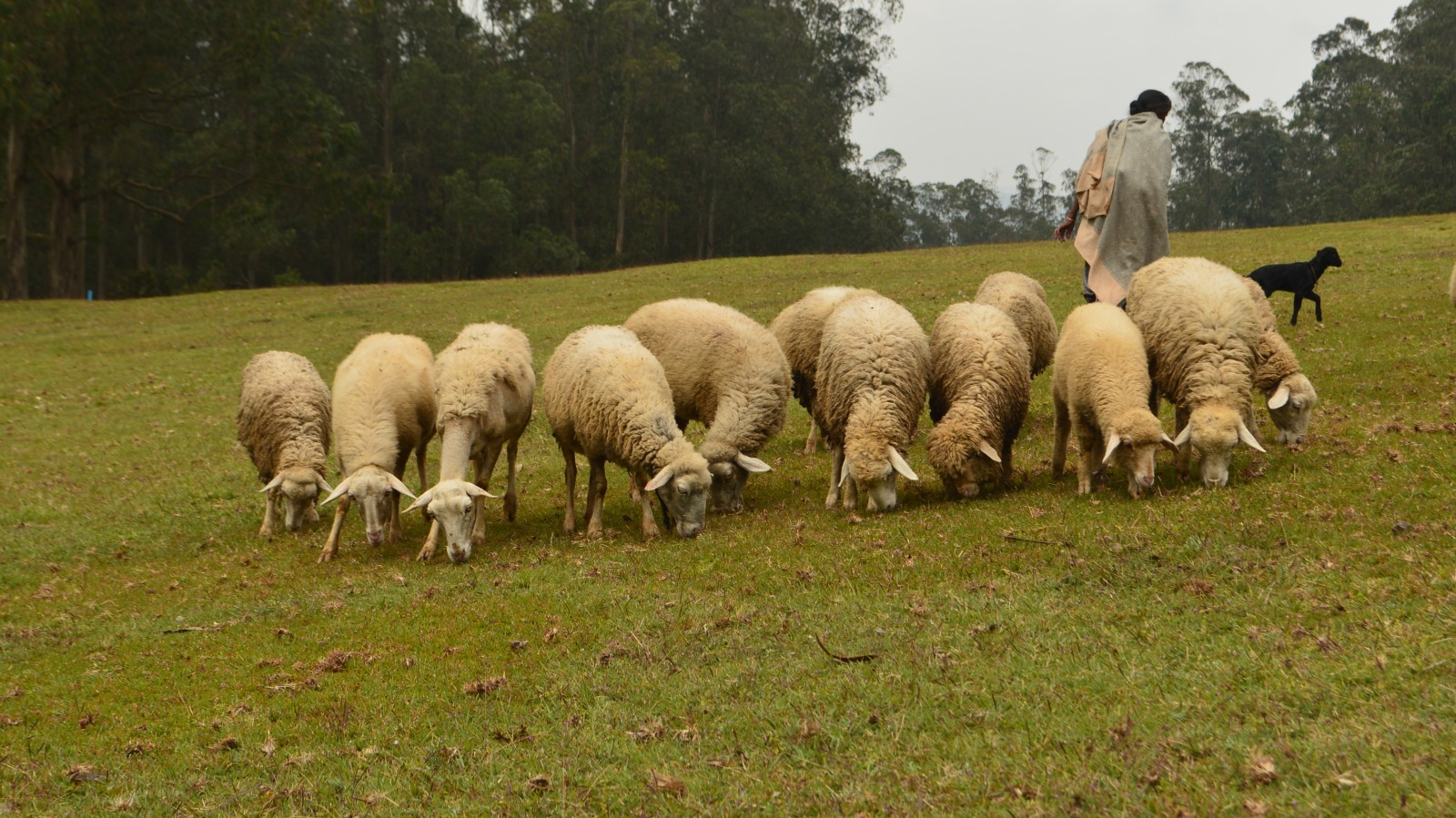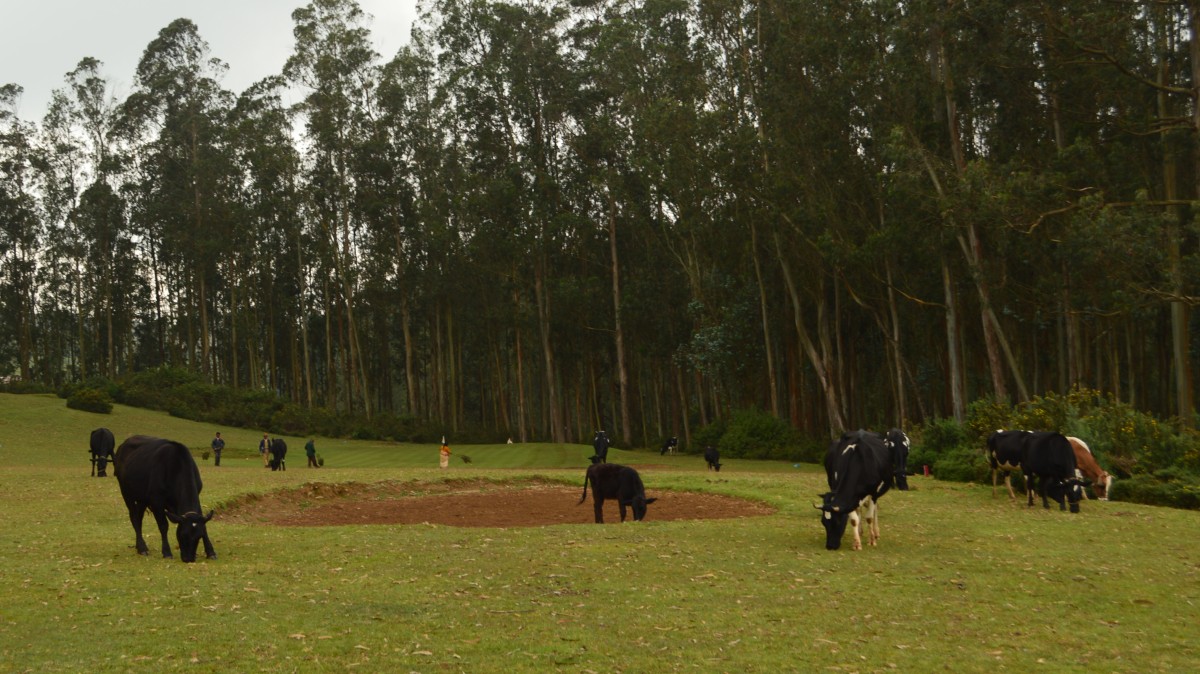 The 1st at Ootacamund Gymkhana Club (founded 1896) is strikingly reminiscent of the 10th at Augusta National. This long dogleg left plays steeply downhill in a wide corridor between tall evergreen trees. Unlike Augusta National, no mechanical mowers have ever been used on this fairway.
The 1st at Ootacamund Gymkhana Club (founded 1896) is strikingly reminiscent of the 10th at Augusta National. This long dogleg left plays steeply downhill in a wide corridor between tall evergreen trees. Unlike Augusta National, no mechanical mowers have ever been used on this fairway.
In the never-ending debate of which is best for fairway mowing—conventional 5-reel mowers, lightweight 5-reel mowers, triplex mowers, ground-driven gang mowers, PTO-driven gang mowers, sheep, cows, other ungulates, rabbits, rotary mowers, scythes, etc.—I look in this article specifically at the intriguing differences between sheep and cows. As you will see, sheep beat cows in three categories of critical importance to the greenkeeper: soil compaction, efficiency, and quality of cut.
Soil compaction: The average cow will weigh about 725 kg. A sheep is just 10% of that, and lambs of course are even less. When fairways are mown with cows, more cultivation activities must be undertaken to relieve soil compaction. Even after a heavy rain, sheep can be sent out to mow, but care must be taken with cow mowing after rain events and in poorly-drained areas. Note that in sandy soils, which are resistant to compaction, this advantage of sheep is negated, and cow mowing can be used with little fear of soil compaction.
 Efficient sheep mowing
Efficient sheep mowing
Efficiency: Fairways cover a large area, usually more than 10 ha for an 18 hole course, and efficiency is of utmost importance to prepare a course for play. Sheep can be herded into any arrangement to go down the fairway in unison. I like to send them in groups of 12, as shown above, with 9 in front to mow a 4 meter swath; the 3 sheep following immediately behind clip any blades not cut. Other turf managers may prefer a different arrangement, 7-2 being popular when fewer sheep are available, and 12-4-2 (sometimes called 3-row mowing) at higher budget properties. Regardless of the arrangement, sheep mow a fairway rapidly and completely.
 Inefficient cow mowing
Inefficient cow mowing
Cows, on the other hand, face in all directions and mow a patch here and a patch there. Fairways mown with cows take approximately 40% longer to cut completely, by my estimation, which often results in the cows interfering with approaching golfers, as mowing simply cannot be completed ahead of play.
Quality of cut: No matter how light the footprint, or how incredibly efficient a mower is, the end result must be a high quality of cut in order to produce the desired playing surface. This is where sheep really excel. Their self-adjusting mowing height produces the ideal height of cut (HOC) on any surface, and they cut precisely by biting off the leaves in a fluid scything motion (see video above). Cows aren’t able to mow at extremely low HOC, but do mow at a HOC acceptable to most golfers. However, the tearing action as cows mow (see video below) results in more damage to the grass, possibly increasing the grass water use and creating entry points for fungal pathogens.